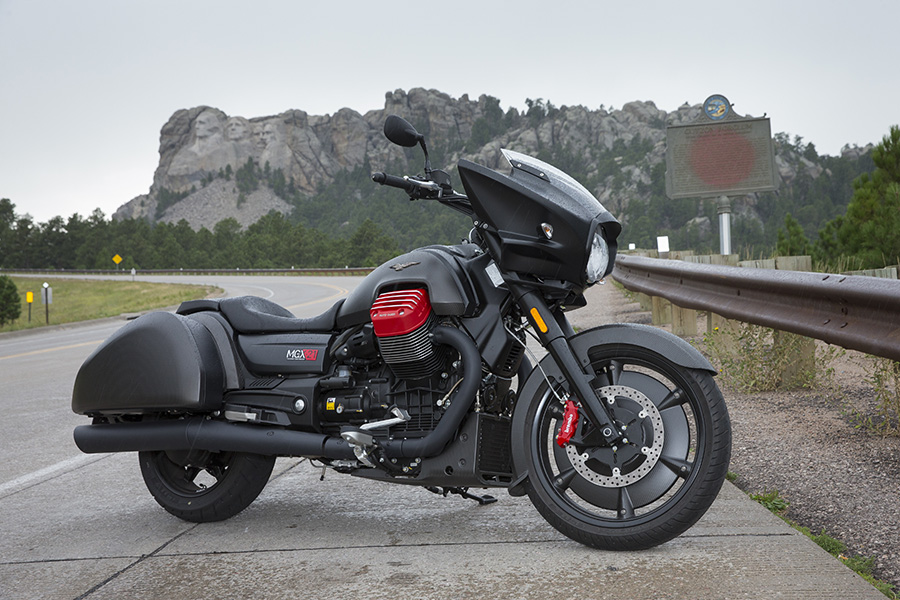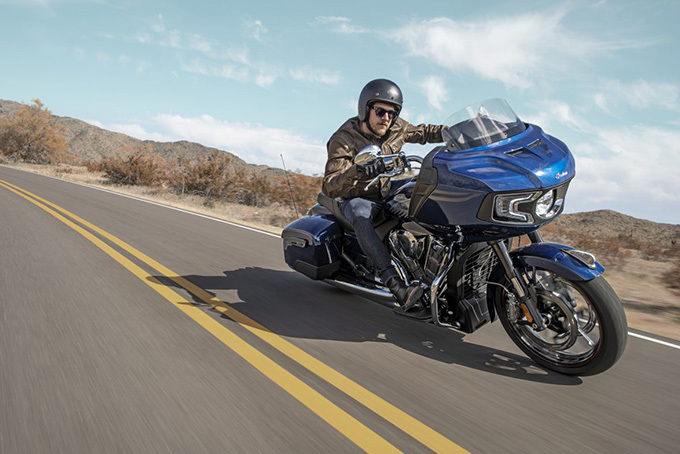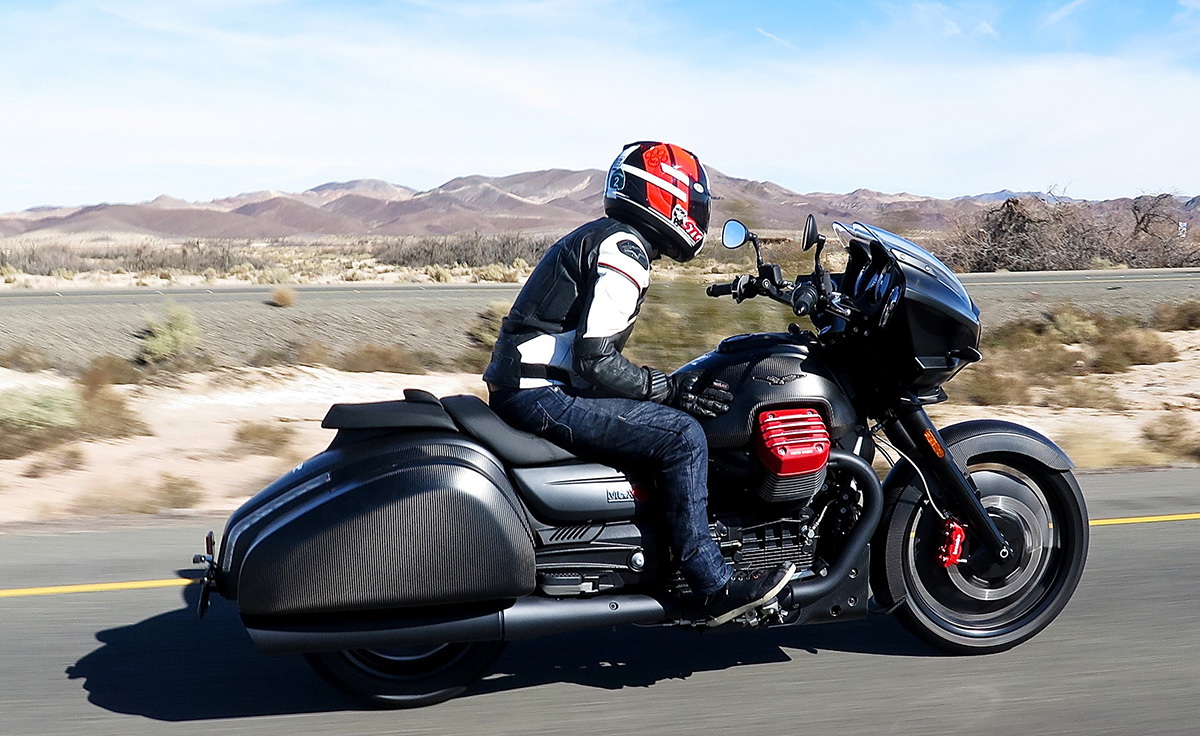What is a cruiser motorcycle
The name of this class of motorcycle suggests that you can go on a long journey on it. It is characterized by comfortable footrests, soft leather seats, backrests, and armrests in the passenger seat. Cruisers look luxurious - the abundance of chrome, leather, and vintage elements instantly attracts the attention of others.

The cruiser is not suitable for beginners - it is heavy, powerful, and not as maneuverable as urban models. The cruisers are not designed for off-road use either, their element is long trips on asphalt tracks. For this purpose, a volume tank, cases, and a tractive engine are provided.
So, a cruiser is a motorcycle for the road. And for the roads in the most romantic sense of the word. You can feel pleasure from owning it, you can enjoy the sound of the motor, the luggage space, the chrome, in a word, anything, but the further the road will go from the "romantic ideal", the lesson this motorcycle you will enjoy it.
History of Cruiser motorcycles

With the advent of the motorcycle, the industry rapidly evolved, giving way to more advanced and high-performance two-wheeled models. This included the U.S., with its era of big V-Twin engines of the golden era, thanks to manufacturers like Crocker, Indian, Excelsior and Harley-Davidson. U.S.-based motorcycle companies not only used these designs in the mid-1900s, but said they would serve as the visual inspiration for the lion's share of production motorcycles that were subsequently produced-a trend that continues to this day.
Along with the bike's relaxed riding position, ample torque, and travelability, their typically American aesthetic plays a major role in distinguishing them from other motorcycle styles and represents a major selling point for biker crowds. That's not to say that foreign manufacturers haven't tried to emulate this style or give it a unique twist, although cruisers are generally American at heart.
What defines a cruider?
That's my attachment to the word, isn't it? And that's because I still had an almost complete list of requirements for such a motorcycle just for a long-distance ride on the highway when I bought it.
- Platforms instead of running boards.
- high and wide windshield.
- gel seat for the big American butt.
- 2 roomy side bags with locks.
- The only thing missing was the safety bars and adequate exhaust. But in the time I've owned it, passenger footpegs, arches, a rear bag, and a bunch of other little things with the same bias have appeared.
Speaking of bags. My side bags are quick-release, but even without them I still have a back "suitcase" Each saddle bag measures 8 inches. This means that I can safely carry a repair kit for the wheels, cover, chain, backpack with things, and all it easily fit into just 1 bag. Is it nice?
Absolutely, but to travel (especially if it's with tents) has to curb your appetite, and the ability to carry a bunch of stuff with a few ... corrupts relaxes. But in general, yes, the chances that you show up on the horizon motorcycle with bags will be so you need now a harness, much higher than the same sportbike.
What happens, if you take off all this kit? It will be a cruiser, but not absolutely - not a canonical "chopper", but also not a cruiser ready for "cruising". In short, it won't be much different from an HD 883. What is the sense of bigger cubic capacity in this case? Well, first of all, acceleration. Strange as it may seem, even the owners of "quiet" bikes sometimes change their machines for "faster". The second, and no less important point - the roar of the motor. Not for nothing, owners of such vehicles pay much attention to the sound of the muffler and the muffler as a whole.
The Cruiser Riding Position
In general, the motorcycle-riding position is an individual concept. I found it uncomfortable to sit on Valkyrie 1500 for some reason. Nevertheless, the seat on such a motorcycle is comfortable. It should be comfortable if we remember that our task is to ride far away and the purpose is to ride rather than "to get fast".
A person who has never sat on such a motorcycle, I can suggest to sit down in an ordinary office or computer chair, stretch your legs horizontally, put them on the floor and pull them slightly toward you so that your feet touch the floor completely, but it does not seem that you are pulling your feet somewhere. That's pretty much it.
Riding

And here is where everything is radically different from any other class. The main thing that should not be forgotten is that this motorcycle is designed for leisurely travel, preferably in a straight line, and in no way implies entering corners at sporty angles. Yes, I'm unlikely to enter a turn at the same speed at which a sportbike or even a road bike will do it. The bike may even be able to do it, but such gestures are not the sense of movement on this bike. Although I've tilted it up to the footrests a few times, strong tilts are still not its pluses.
The same goes for dynamic maneuvers. If I ask my mate, "Is 6.3 to 100 fast?" - he'll say yes because he drives a KTM 125 and for him it's fast. And if I ask sportbikes, he'll say, I don't know, he'll probably laugh.
If you have a fast bike, you can easily imagine what 7 seconds to 100 is. Now read the paragraph about the landing again, take that pose and imagine accelerating in it. Bullshit? That's what I think. That is, the opportunity to break away from the flow of the start is, I use it regularly (if the further road is empty), but in general - not to say that I have a big difference 6.3 there, 7 or 10. I did not measure the acceleration - 6.3 is the figure from the Internet.
But what's interesting - it would seem, then why do you need more liters at all? Would you get 600-750cc and go for a drive?
In general, many people do that. But my acquaintance with such volume with passenger and cargo has done 100 and no more. And he is light, and passenger chooses... well, in general, not heavy either.
It is in general the answer - you need power for the sake of speed reserve, acceleration reserve. Not for 125+ mph. Gold Wing can, he has a top speed of 135 mph it seems.
What to look for when buying a cruiser

Now that you're familiar with a little history of cruisers, let's delve into the five most important aspects to consider when buying a motorcycle in this class (in order of importance).
- Intended Use: No matter what kind of motorcycle you're looking for, your search for should always be based on what you plan to use, and this is no less true of cruiser bikes. If you plan to use it for daily commuting, you'll need something more nimble and maneuverable, like if you're going to do long hikes in the saddle, you might want to consider one with a trunk.
- Style: The enormous popularity of the cruise segment has led to a variety of styles within the class. Some cruisers take a more vintage approach, drawing aesthetic influences from retro models of the mid-1900s, while other models take a more modern approach, with a more aggressive character and generally more modern design language. It's worth familiarizing yourself with all the different stylistic options before making a purchasing decision.
- Engine power: One of the most defining elements of a cruiser is its engine and its torque and horsepower. Not only will you want to consider whether the size and power of the engine are appropriate for your intended use, but also whether you are capable of operating a particular engine properly and safely. Also, engine mechanics and technology can vary greatly even without today's market, with some companies using much more advanced powertrains than others.
- Weight: Most cruisers weigh more than half a ton, making them extremely difficult to maneuver at lower speeds, especially for the inexperienced and/or uninitiated. Since these are the heaviest bikes in existence (not counting three-wheelers), it is extremely important to consider the weight of a cruiser when buying one.
- Brands: Some brands have developed iconic statuses and followers when you're not just buying a motorcycle, you're buying a brand, identity, lifestyle, and experience. Since many modern cruiser models are inspired by existing vintage bikes, the history of the cruiser companies is considered very important. Different manufacturers also have different dealer networks and support, as well as different degrees of access to replacement parts. Finally, it's always worth reading about a particular company's history and reputation for aspects such as reliability, as well as recommended service intervals.
